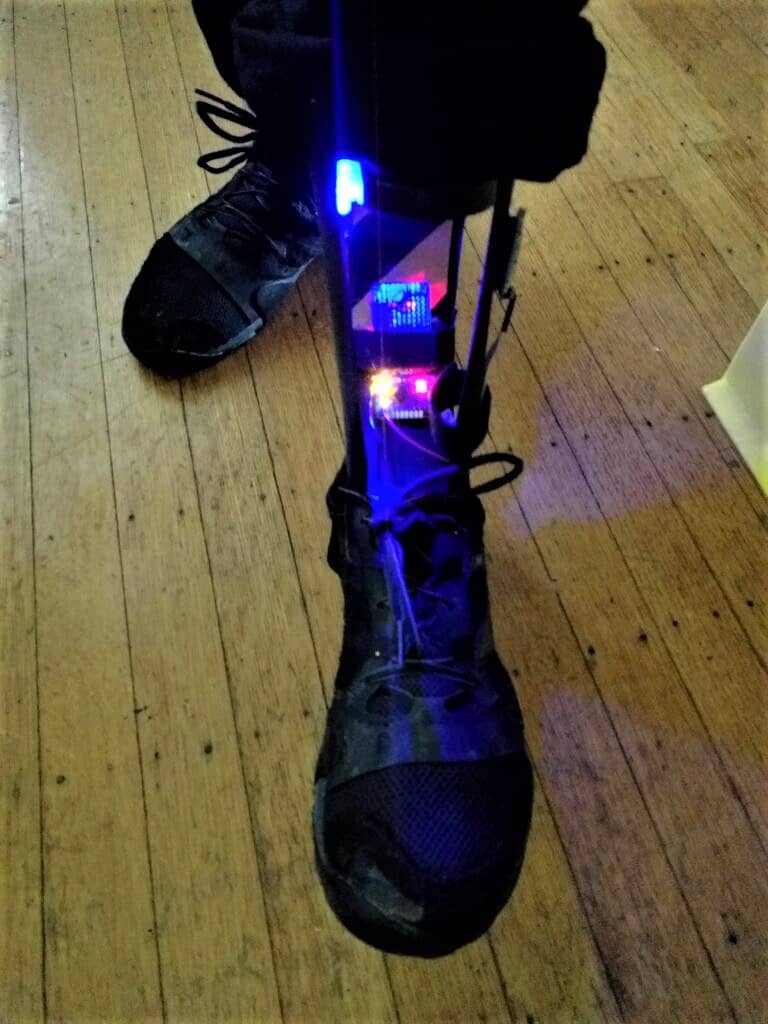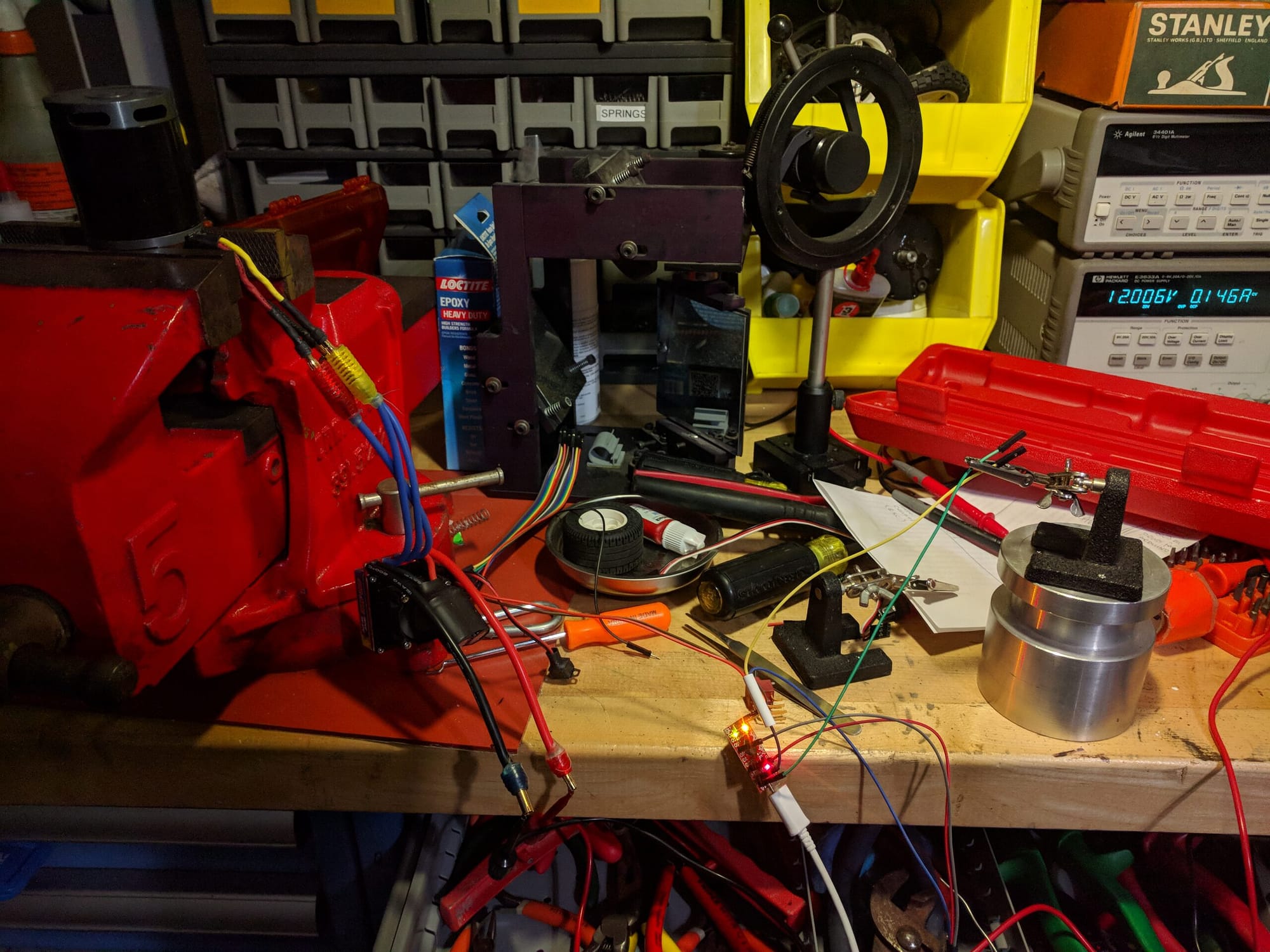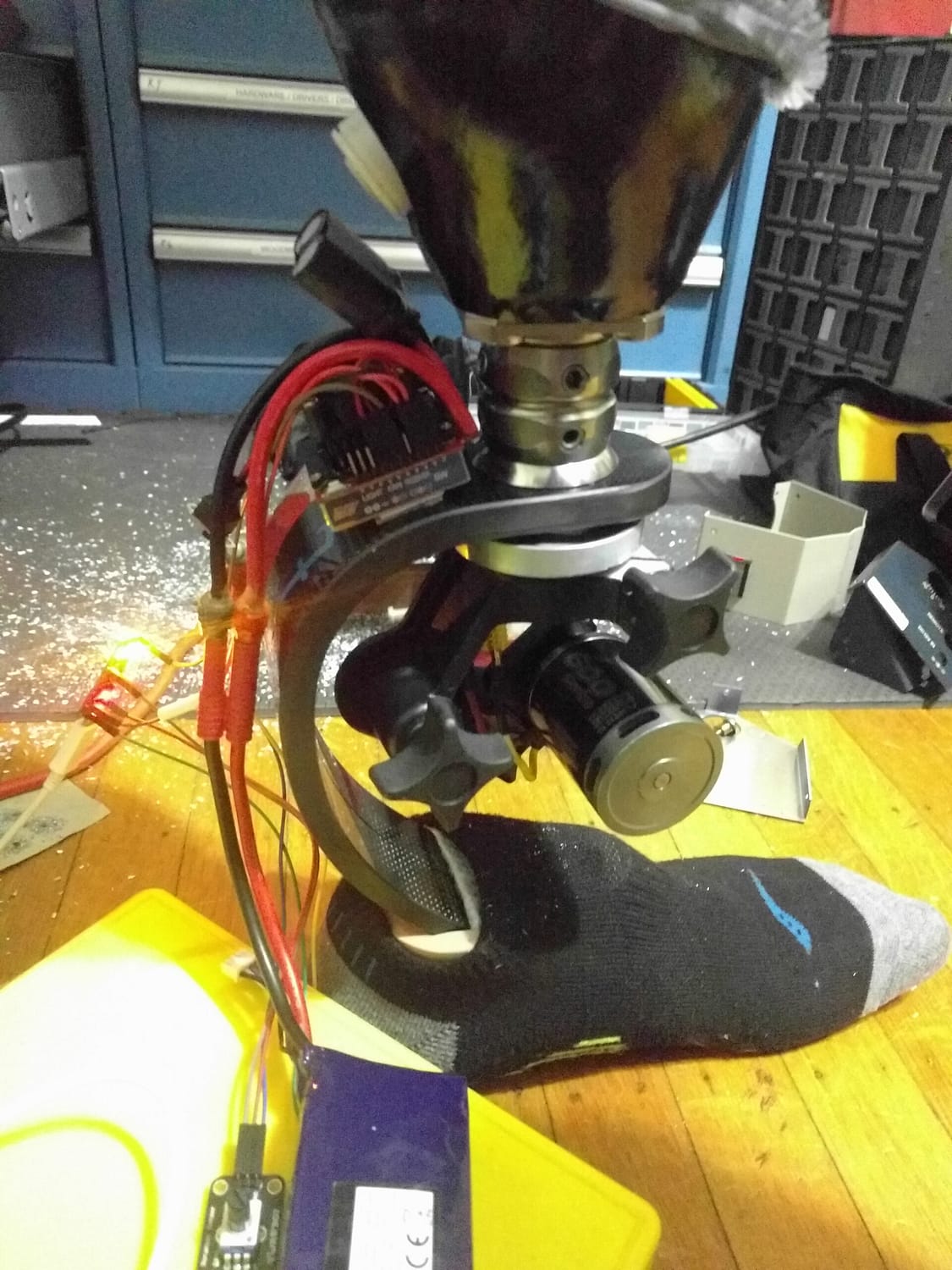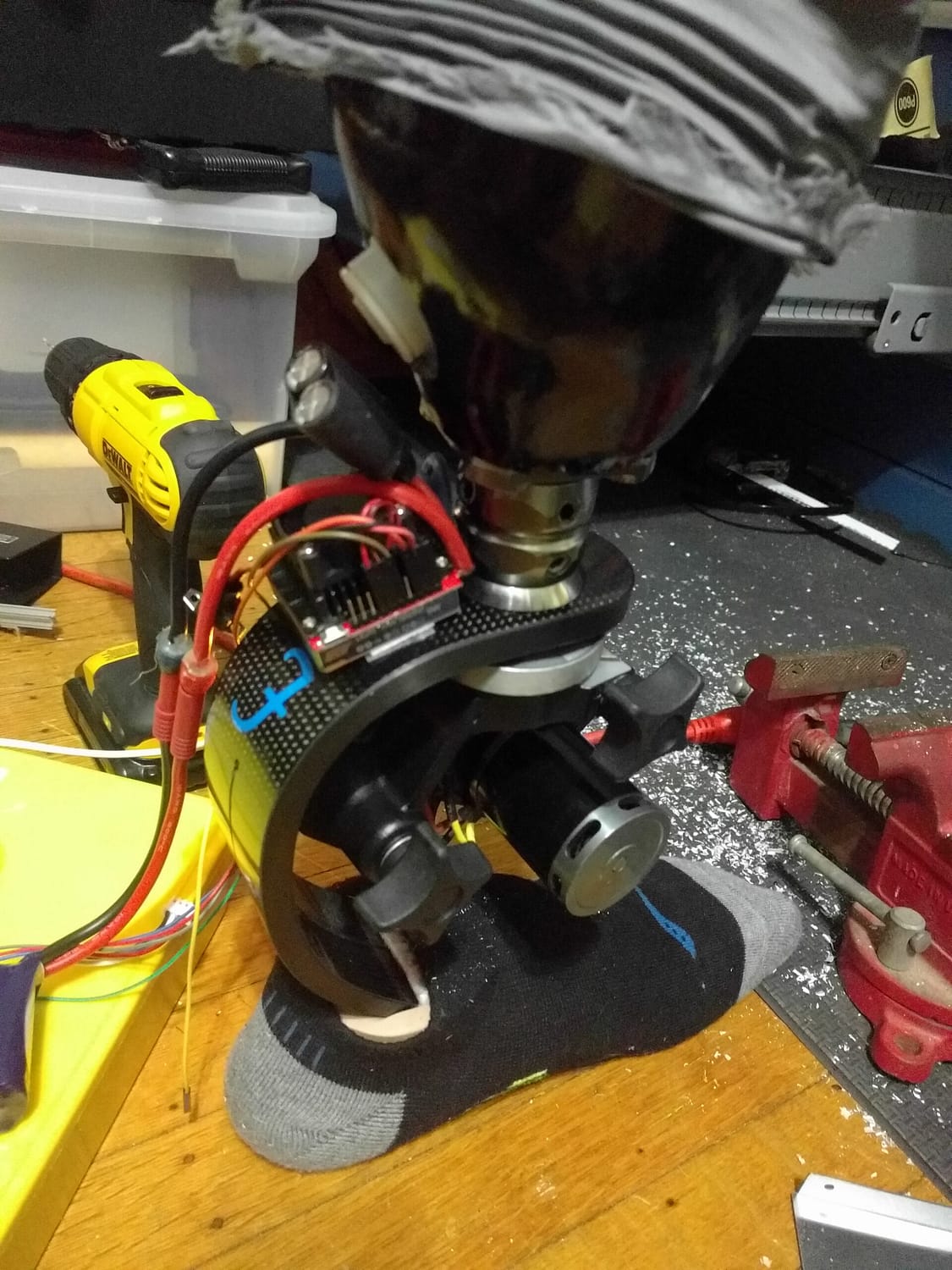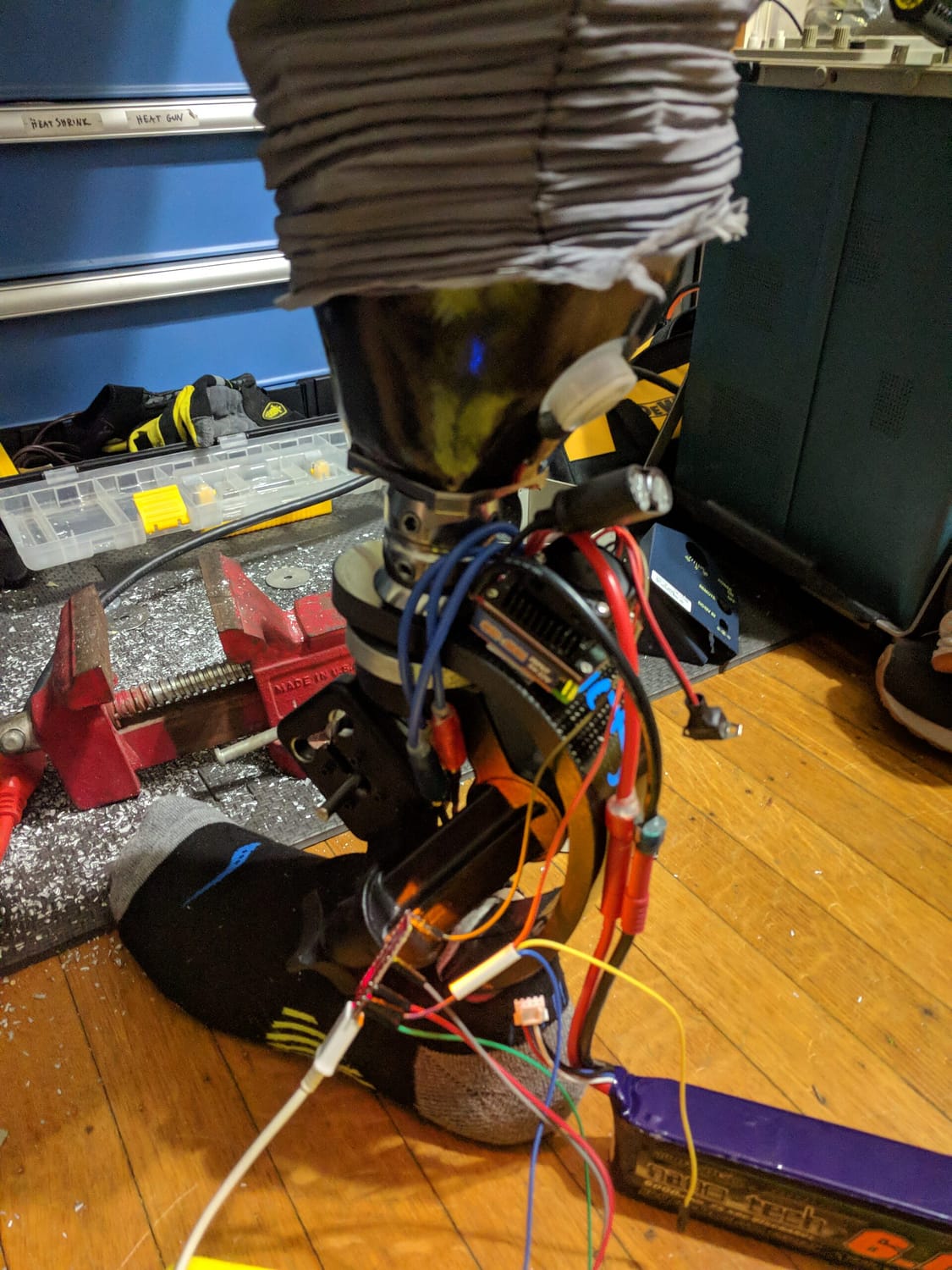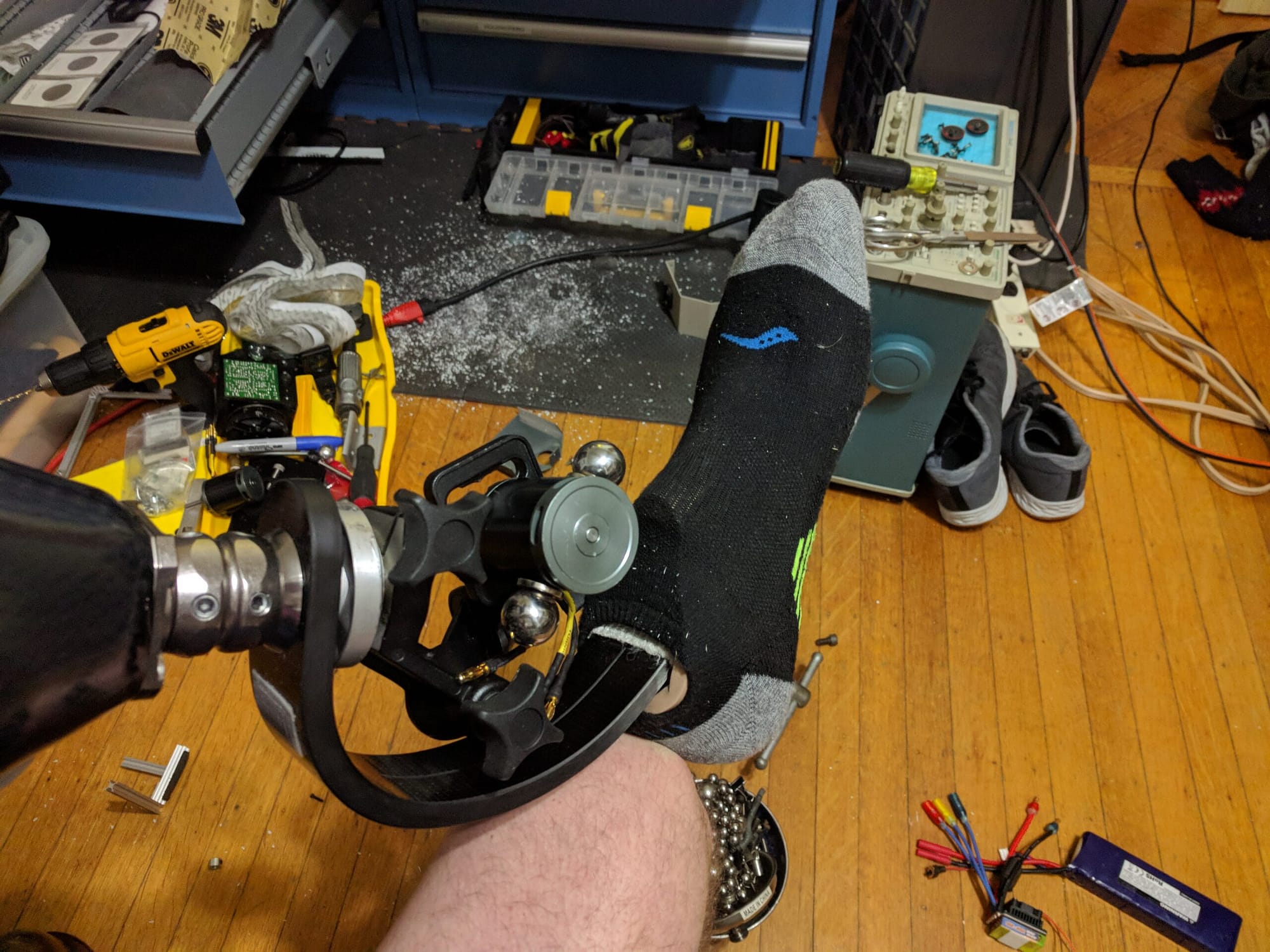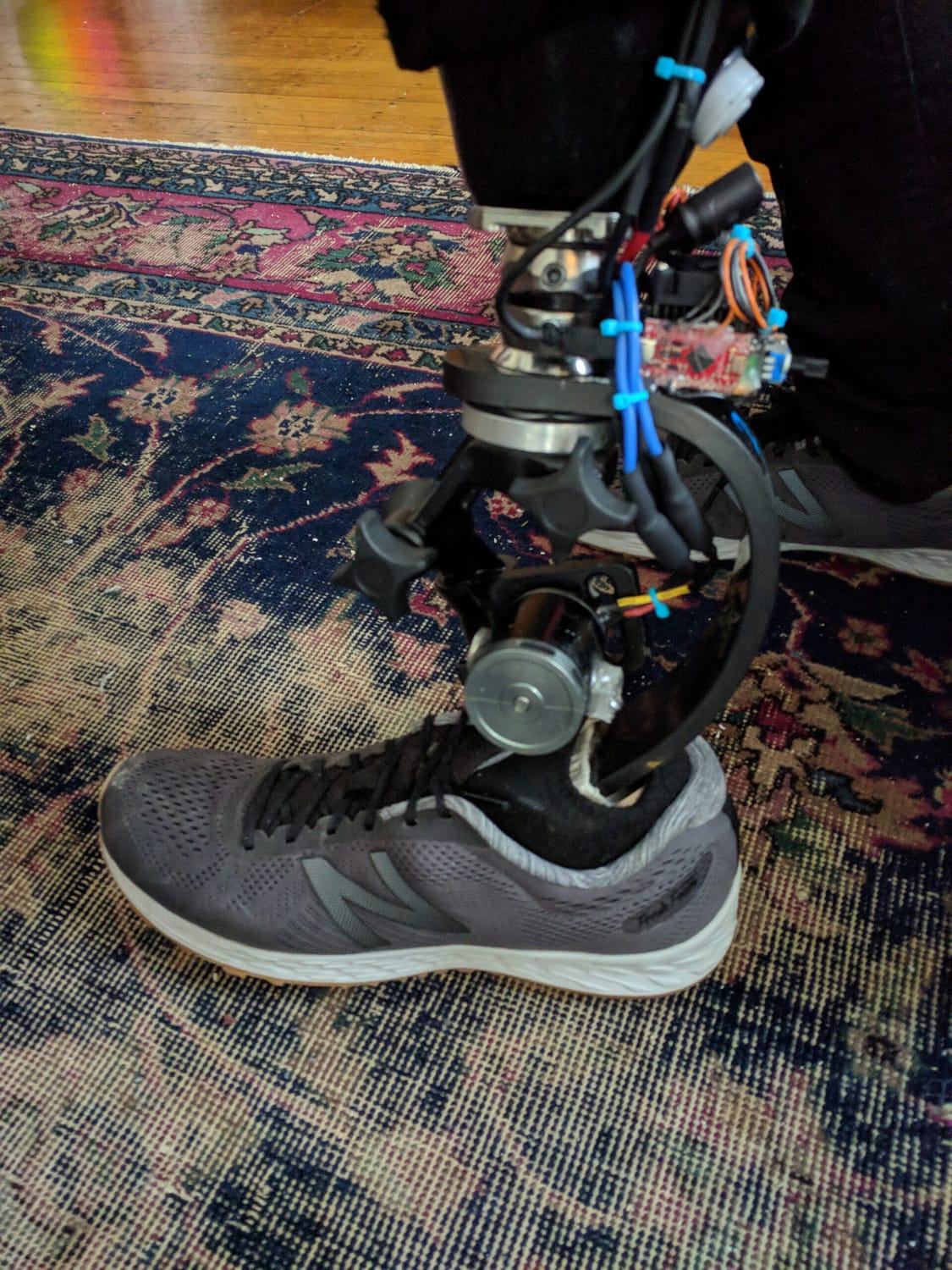Angle, inertia, and velocity are a subset of moment arms that when instinctively activated are biologically hardcoded in how we navigate through space. The complex geometries of gait motion extend significantly beyond any computational model in real-world outcomes. We need to further explore shifts in torque differentials within the interface between the wearer and the device.
Displacements in the alignment between the sagittal plane of interface and the trajectory of forward motion cause significant disruptions in gait efficiency. This system provides a dynamic, real-time rotational inertia throughout the gait cycle axis, minimizing angular misalignment between the anatomical limb and the bionic interface. This resultant stabilization is especially critical at the point of heel strike in early gait motion when contact between the device and the ground is small and unstable.
(un-mute for audio)
